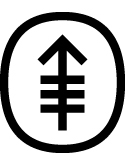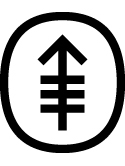Factor analysis of the immunophenotypes of astrocytomas and malignant gliomas: Correlations with tumor grade and patient survival Journal Article
| Authors: | Jennings, M. T.; Asadourian, L. L. H.; Jennings, V. D. V. L.; Shapiro, J. R.; Thaler, H. T. |
| Article Title: | Factor analysis of the immunophenotypes of astrocytomas and malignant gliomas: Correlations with tumor grade and patient survival |
| Abstract: | Our previous investigations correlated the degree of cytogenetic and immunophenotypic heterogeneity of cultured normal glia, astrocytomas and malignant gliomas. The possible significance was suggested by the statistical correlation of individual antigens with diagnosis and patient survival [1]. The present study has established the patterns of covariation of titers of monoclonal antibody reactivity with a panel of cell surface antigens among normal glia (8), astrocytomas (4), anaplastic astrocytomas (12), mixed malignant gliomas (8) and glioblastomas (21). A mean aggregate titer across 43 antigens was computed for each culture and then subtracted from the observed individual titers. Factor analysis was performed to determine a small number of Factors, derived as the weighted average of the 43 mean-adjusted antigens, which accounted for a significant proportion of the covariation of immunophenotypic expression in the sample of 53 cultures. Clusters of antigens were found to independently segregate in their deviation from the aggregate phenotype. Adjusting for age and diagnosis, Factors 1 and 4 correlated with patient survival among recurrent and primary neoplasms, respectively. Factor 2 additionally discriminated between primary and recurrent gliomas. Factor 3 was associated with age at diagnosis. Factors 1 and 2 correlated with the histopathologic grade of glial tumor. Scatter plots of Factor 1 vs. 2 revealed the minimal immunophenotypic diversity of the normal glia. Astrocytomas were similar but not identical. Progressive divergence was evident between the immunophenotypes of anaplastic astrocytomas, mixed gliomas and glioblastomas. These data suggest that qualitative and quantitative differences in antigenic heterogeneity may identify stages in glial tumor progression. Furthermore, the aggregate immunophenotype may be a useful prognostic indicator, which is independent of established clinical variables such as age at diagnosis and pathologic grade of neoplasm. Factor analysis has been shown to be an efficient means of reducing the dimensionality of the data without sacrificing its informative character. © 1990 Kluwer Academic Publishers. |
| Keywords: | human tissue; glioma; phenotype; cell line; tumor cells, cultured; immunology; antibodies, monoclonal; antigens, neoplasm; astrocytoma; malignant gliomas; astrocytomas; tissue culture; factor analysis; factorial analysis; factor analysis, statistical; prognosis; human; article; support, non-u.s. gov't; support, u.s. gov't, p.h.s.; immunophenotypes |
| Journal Title: | Journal of Neuro-Oncology |
| Volume: | 9 |
| Issue: | 3 |
| ISSN: | 0167-594X |
| Publisher: | Springer |
| Date Published: | 1990-12-01 |
| Start Page: | 265 |
| End Page: | 273 |
| Language: | English |
| DOI: | 10.1007/bf02341157 |
| PUBMED: | 2086740 |
| PROVIDER: | scopus |
| DOI/URL: | |
| Notes: | Article -- Export Date: 27 January 2020 -- Source: Scopus |
Altmetric
Citation Impact
BMJ Impact Analytics
Related MSK Work





